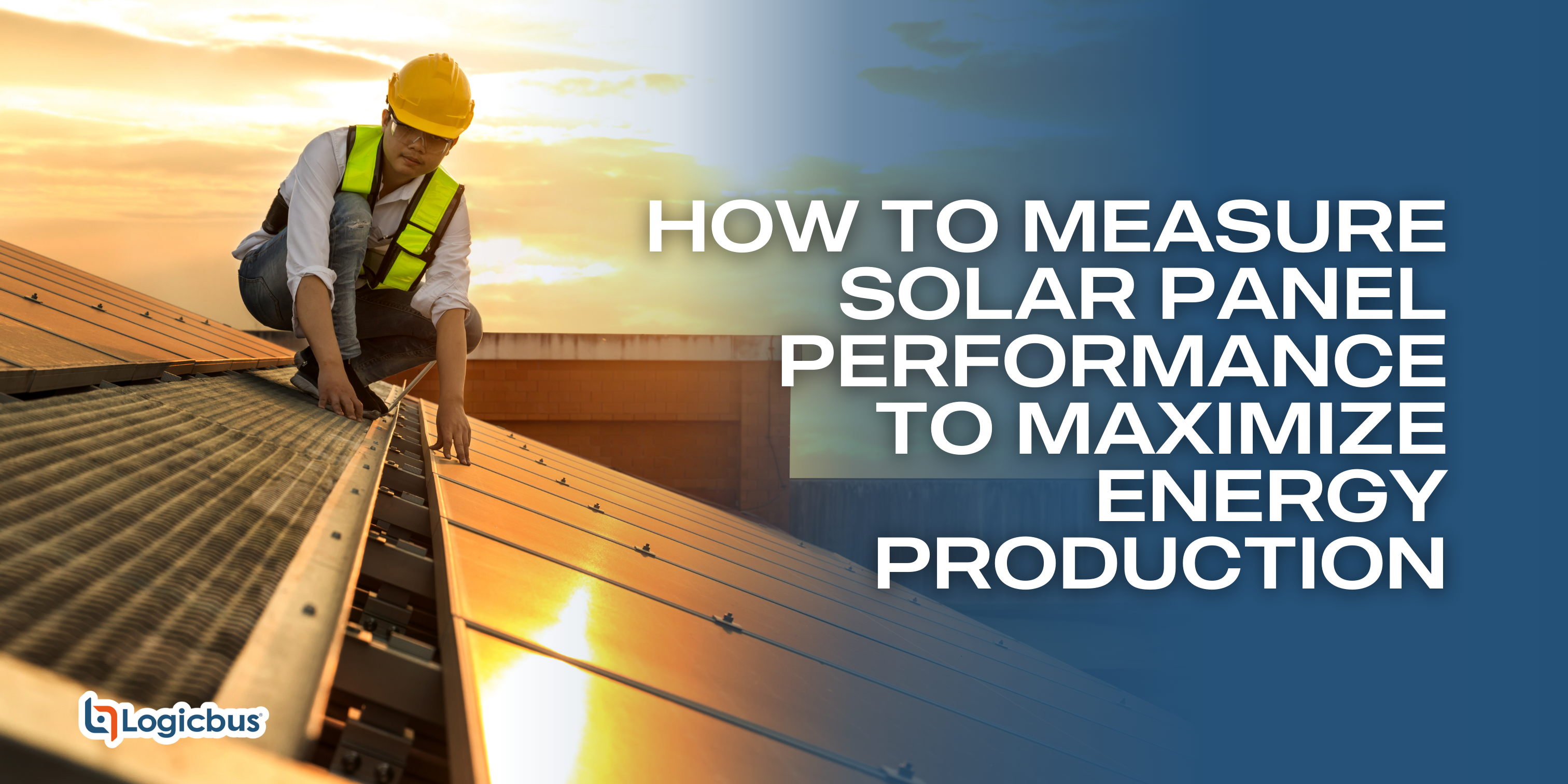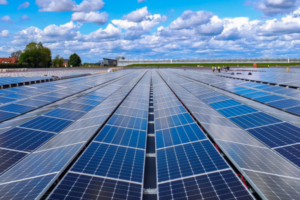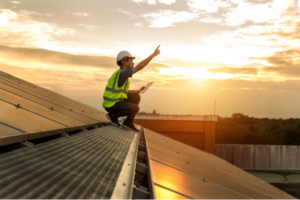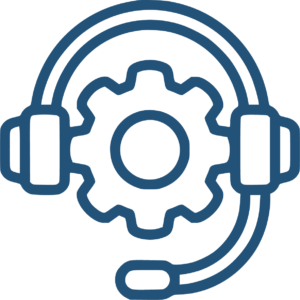Key Factors Affecting Solar Panel Performance
- Temperature: Solar panels work best in moderate temperatures. High heat can reduce their efficiency, making it essential to monitor ambient temperature around the panels.
- Shade and Dirt: Shade from nearby objects, trees, or accumulated dirt on panels can dramatically reduce output. Regular cleaning and strategic placement can mitigate these issues.
- Orientation and Angle: Solar panel efficiency is highly dependent on the angle and direction of the panels. Panels must be aligned correctly to capture the maximum amount of sunlight.
- Voltage and Current: Monitoring the voltage and current produced by each panel helps in identifying efficiency drops, which can point to the need for maintenance or adjustments.
- Environmental Factors: Humidity, dust, and other environmental conditions can also impact efficiency and should be tracked.
Logicbus provides solutions that enable detailed monitoring and analysis of these factors to help maximize solar energy production and ensure that each solar panel operates at its peak performance.
Measurement of Solar Panel Performance
To ensure that solar panels are performing optimally, Logicbus offers a monitoring system that uses sensors for current, voltage, and temperature measurement, all connected to a central controller for real-time supervision. This solution is particularly useful for solar installations, providing accurate data to optimize energy output and identify potential operational issues early on.
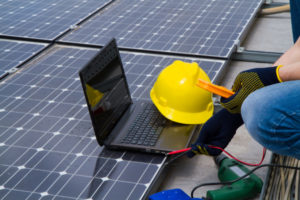
How Does It Work?
1. Real-Time Monitoring of Current and Voltage in Solar Panels
Modules like the ZE-2AI and T201DC are designed to measure current and voltage in each solar panel. These sensors continuously collect data on energy production, helping detect performance drops that might signal maintenance or cleaning needs. By observing changes in voltage and current, operators can pinpoint specific panels requiring attention, thereby avoiding energy loss.
2. Centralized Control and Supervision
The P5070NB HMI serves as the central monitoring hub, consolidating data from all sensors. This interface enables operators to visualize energy production in real-time, generating trend graphs and alerts whenever voltage or current levels deviate from optimal ranges. This centralized control is critical for performance optimization and preventative maintenance.
3. Temperature and Environmental Conditions Monitoring
Environmental factors, including temperature and humidity, impact solar panel efficiency. The DL-100-E sensors are placed near the panels to measure these factors and transmit data to the central system. Understanding these conditions allows operators to adjust and maintain solar panel performance in response to changing environmental conditions.
4. Angle Measurement for Efficiency Optimization
Solar panels can benefit significantly from adjustments to their angle and orientation, especially in installations with adjustable panels. An absolute encoder, such as the SR12, measures the angle of the panels, enabling operators to adjust orientation for maximum solar capture.
5. Performance Analysis and Alerts
The P5070NB HMI centralizes performance data and presents it in user-friendly monitoring software, generating reports and alerts in real-time. This function enables immediate preventive actions in case of detected anomalies, minimizing downtime and preserving energy output.
6. Cloud-Based Control Panel and Manual Adjustments
To support remote operations, the P5070NB HMI offers cloud-based access, allowing technicians to make maintenance adjustments and monitor system parameters from afar. This flexibility enhances control over the system, especially in challenging conditions.
Step-by-Step Process to Maximize Solar Panel Performance
- Current and Voltage Measurement: ZE-2AI and T201DC modules monitor real-time energy generation and consumption for each panel.
- Centralized Visualization and Supervision: The P5070NB HMI displays data in readable graphs and reports, facilitating rapid analysis.
- Temperature and Humidity Monitoring: DL-100-E measures environmental factors that affect panel efficiency.
- Angle Control: SR12 encoder optimizes the inclination of panels to enhance solar capture.
- Alerts and Predictive Maintenance: The system generates alerts for performance anomalies, prompting preventive maintenance.
- Cloud-Based Control: Remote adjustments can be made via the P5070NB HMI for efficient system management.
Conclusion
Optimizing solar panel performance is essential in maximizing energy output and efficiency within the renewable energy industry. By monitoring and adjusting critical parameters—such as current, voltage, temperature, humidity, and panel angle—solar installations can operate at peak performance. Logicbus offers a comprehensive solution to streamline this monitoring, using advanced sensors and real-time data analysis tools that ensure solar panels remain in top condition, maximizing the benefits of solar energy while reducing operational costs and minimizing environmental impact.
sales@logicbus.com | support@logicbus.com | +1 619 616 7350 | Start conversation

